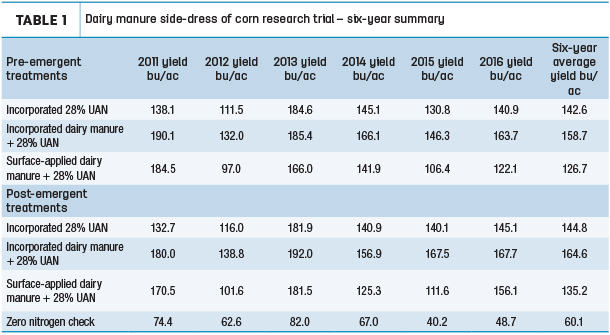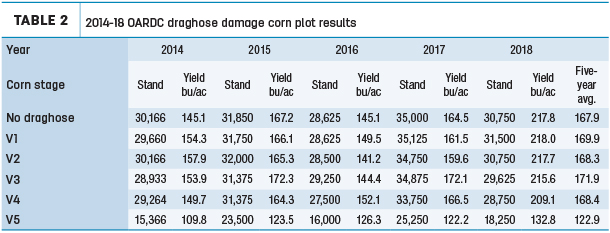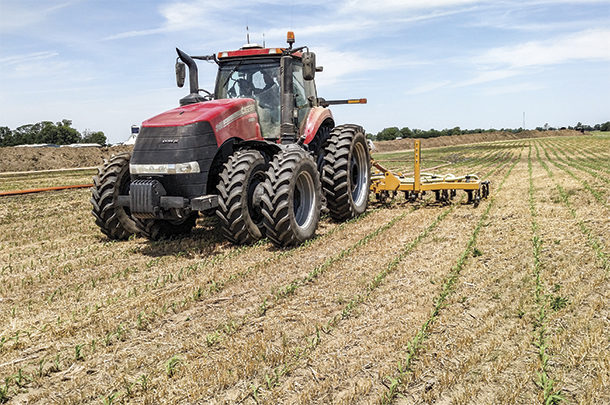Not many years ago, there were only two people allowed to enter a newly planted Midwest cornfield: One was the person applying the side-dress nitrogen, and the other was the person applying the weed control.
Today, livestock producers and commercial manure applicators are applying liquid manure to newly planted and emerged Midwest cornfields using draghose systems. Applying liquid manure to corn supplies nitrogen and moisture to help the crop grow.
Ohio State University Extension has conducted liquid manure research on growing crops for several years in an effort to make better use of available manure nutrients.
Incorporating manure into growing corn can reduce manure nutrient losses, replace all or a portion of the commercial side-dress nitrogen and give livestock producers or commercial manure applicators another window of time to apply manure to farm fields.
The manure research trial in Table 1 was conducted over six years at the Northwest Ohio Agricultural Research and Development Center’s Hoytville station.

The dairy manure application rate was 13,577 gallons per acre to get 130 units of nitrogen. The dairy treatments received additional nitrogen as incorporated 28% urea-ammonium nitrate (UAN) just prior to the manure application to reach the 200-pounds-per-acre goal. The 28% UAN treatments also received 200 units of side-dress nitrogen.
Pre-emergent applications of 28% UAN, swine manure or dairy manure were made within three days of corn planting. Post-emergent applications of 28% UAN and dairy manure were made at the V3 stage of corn growth. Manure applications were made with a 2,250-gallon tanker and Dietrich toolbar with sweeps. Incorporated manure was placed at a depth of 5 inches. Surface manure was applied by using the Dietrich toolbar held just above ground level.
Stand populations were approximately 31,000 plants per acre across all treatments. The dairy manure, incorporated or surface- applied, did not appear to reduce the plot stands in any year.
The incorporated manure treatments produced higher yields than the 28% UAN and the surface-applied manure treatments. This is probably due to less nitrogen being lost when the manure was incorporated. Incorporation of manure can result in less nitrogen loss, less odor and can reduce the loss of phosphorus from the fields.
A draghose treatment was started in 2014 to determine what stand damage and potential yield loss may occur from the V1 to the V5 stage (Table 2).

A 6-inch diameter draghose, filled with water, was pulled across each plot twice (going in opposite directions) at corn growth stages 1 through 5.
The results of this four-year research study suggest corn could be side-dressed with liquid livestock manure using a draghose up to growth stage V4 without a yield loss. More than 60% of the corn plants were snapped off at the V5 stage. The plants that regrew from being damaged at the V5 stage typically did not produce anything close to reasonable ears of grain.
Harrod Farms in Darke County has annually used a draghose to apply swine-finishing manure to their cornfields since 2014 with great success. They aim for the V3 stage of corn growth to side-dress. The manure side-dress treatments have averaged 14.8 bushels per acre more than the 28% UAN treatments.
They incorporate approximately 6,500 gallons of swine-finishing manure per acre to provide all the side-dress nitrogen. The fields received 10 gallons per acre of 28% UAN as row starter. Harrod Farms plants their cornfields at an angle to make the draghose work. This way a hose humper and second tractor are not needed.
We have also conducted on-farm draghose plots with dairy producers using incorporated dairy manure to side-dress silage corn. At an application rate of 13,000 gallons per acre, the dairy manure provided moisture and about 175 pounds of available nitrogen for the crop.
At harvest time, the dairy manure silage yields averaged 24.5 tons per acre. The commercial fertilizer treatments (180 pounds of anhydrous ammonia as a side-dress) yielded 25.1 tons per acre. Both the manure and commercial fertilizer were side-dressed at the V3 stage of growth.
Commercial manure applicators in the Midwest are routinely driving across emerged corn crops and surface applying dairy manure to supply moisture and nitrogen to the crop. Neither the dairy manure nor the draghose harms the corn stands. The silage yields seem not to suffer even though the wheel damage from the application tractors is evident.
Most dairy farms have an abundance of manure as the spring planting season approaches. Applying manure to cornfields opens new windows for manure application and can reduce the amount of purchased commercial fertilizer needed for side-dressing the crop.
Additional on-farm manure side-dress information can be obtained by following OSU Extension’s manure research on Facebook at Ohio State Extension Environmental and Manure Management. The site has videos of cornfields receiving manure using draghoses.












